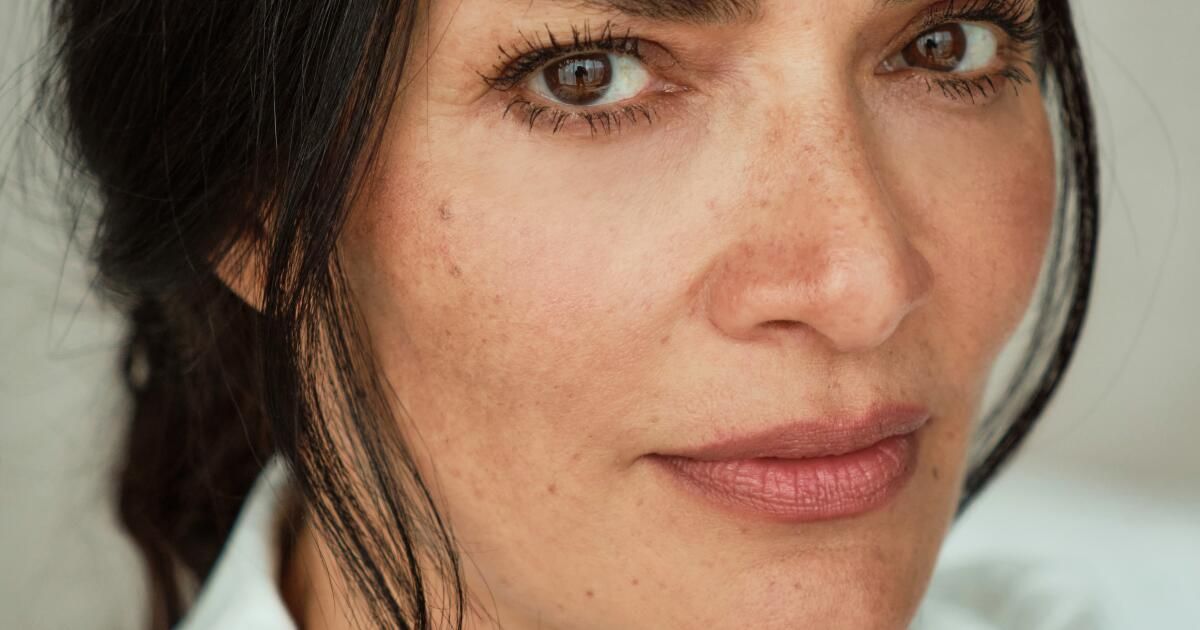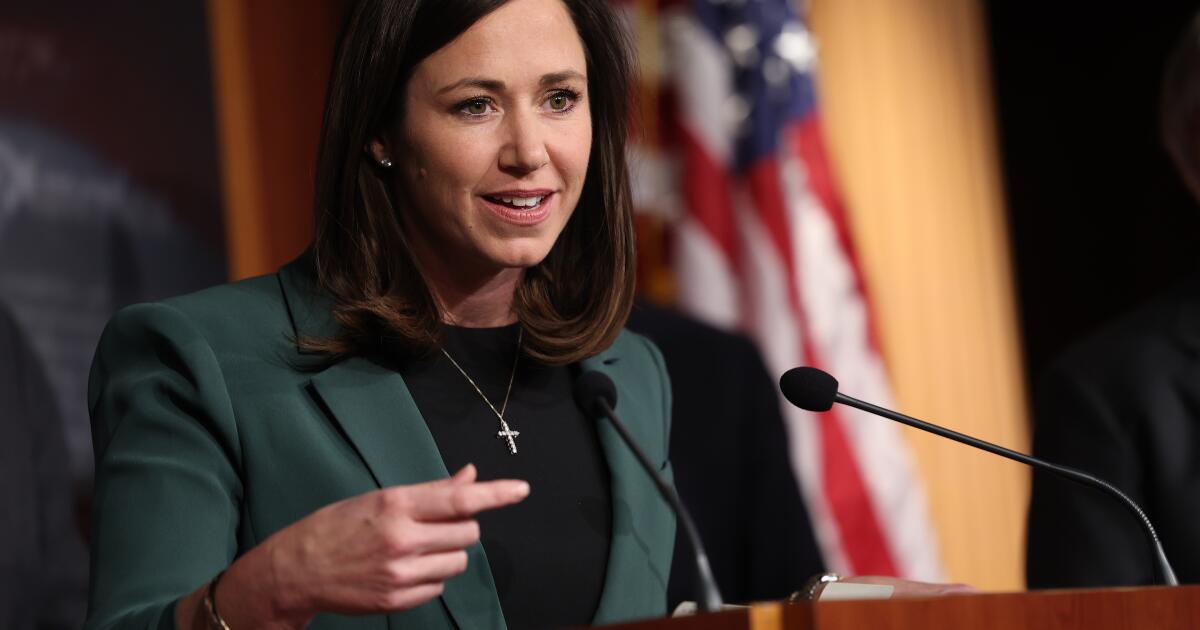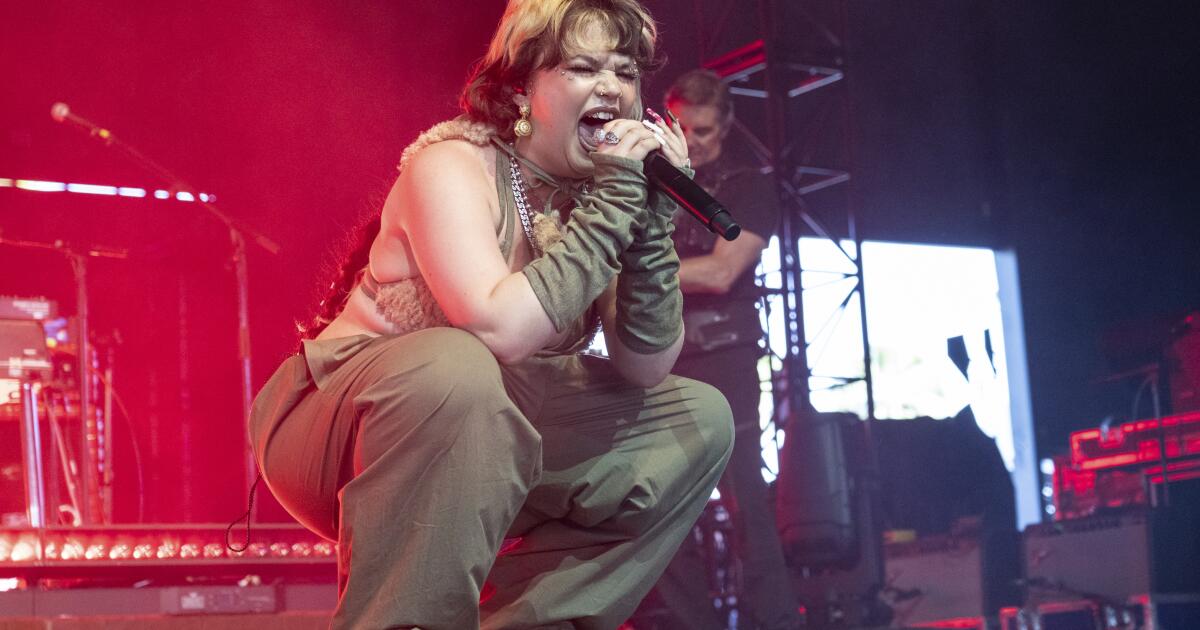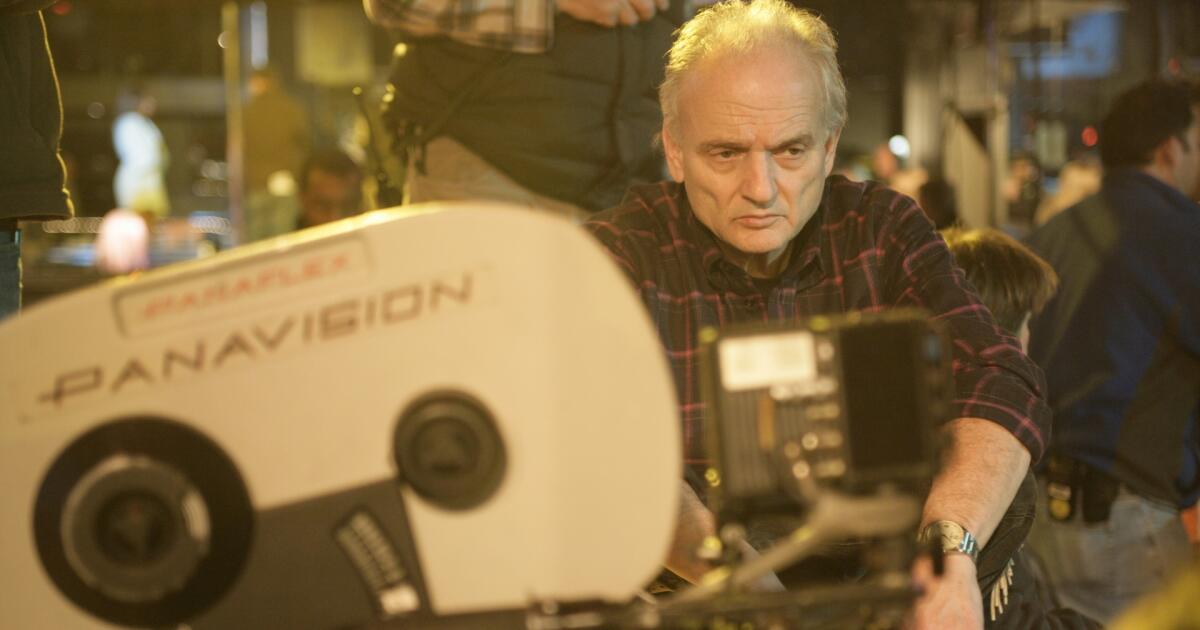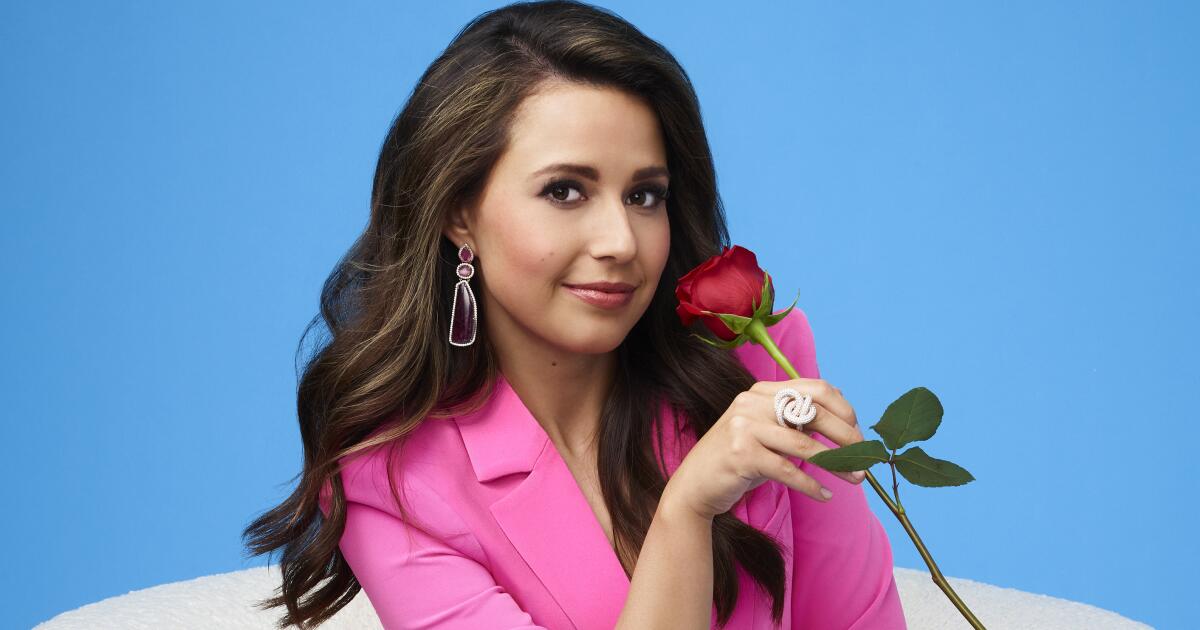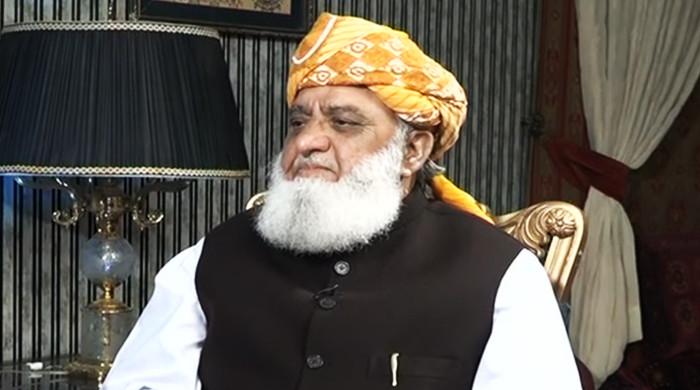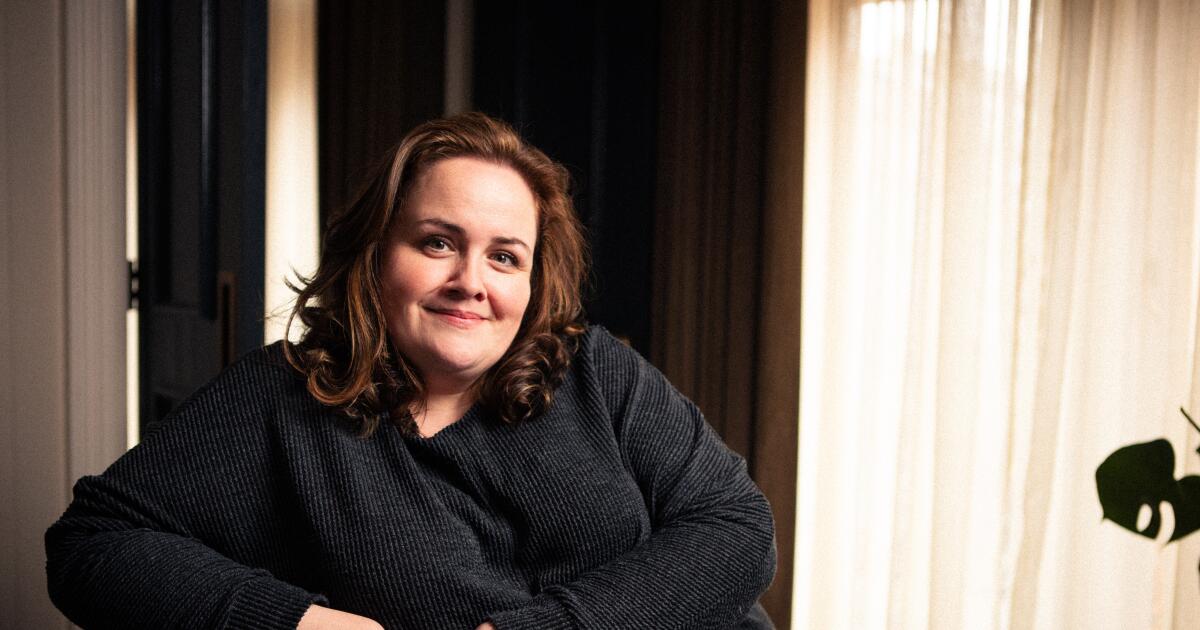Ana María Orozco, who starred in “Yo soy Betty, la Fea” in Miami this month, will reprise her role in Prime Video’s “Betty, la Fea: The Story Continues.”
(Diego Armando Mendoza / For The Times)
Nearly 25 years after its premiere, “Yo soy Betty, la Fea” is getting a sequel that hopes to walk a fine line between reverence and reinvention. “Betty, la Fea: La Historia Continúa,” which premieres Friday on Prime Video, aims to recapture the essence of what made this Colombian telenovela an unprecedented global success while bravely embracing a changed world that will force its iconic protagonist to confront the happy ending written for her so many years ago.
On paper, Beatriz “Betty” Pinzón Solano, played by Ana María Orozco, was the kind of character that soap opera audiences rarely saw at the center of such radical love narratives. True to the show’s title, she was openly ridiculed by being called “fea” – ugly.
She had greasy, wavy hair with bangs. She wore braces. She wore thick-framed red glasses. She wore sloppy skirts with equally sloppy cardigans. She boasted a froggy laugh laden with hiccups. At Ecomoda, a Colombian fashion company that prided itself on celebrating beauty and style, this humble secretary was an oddball. An ugly duckling, even. Add to that the fact that she was in love with the company’s CEO, cocky playboy Armando (Jorge Enrique Abello), and you had the makings of a pretty modern soap opera protagonist.
Created and written by Fernando Gaitán, who had written the successful crossover show “Café con aroma de mujer” a few years earlier, “Yo soy Betty, la fea” was, in 1999, a radical proposal. By mixing the elements of a screwball comedy with the restrictions of a traditional telenovela, Gaitán turned that genre on its head, creating a protagonist and a set of characters (which included an openly gay designer, a group of “ugly” secretaries and privileged conspiring executives) like no other that had existed before.
“It was almost like an X-ray of society at the time,” Orozco tells The Times by phone in Spanish. “There was a humanity to his characters that helped make it feel universal. He was a great observer of the world and I think he managed to capture the essence of something that isn’t really addressed in traditional telenovelas. And he combined it with humor, which allowed him to go places you wouldn’t normally go.”
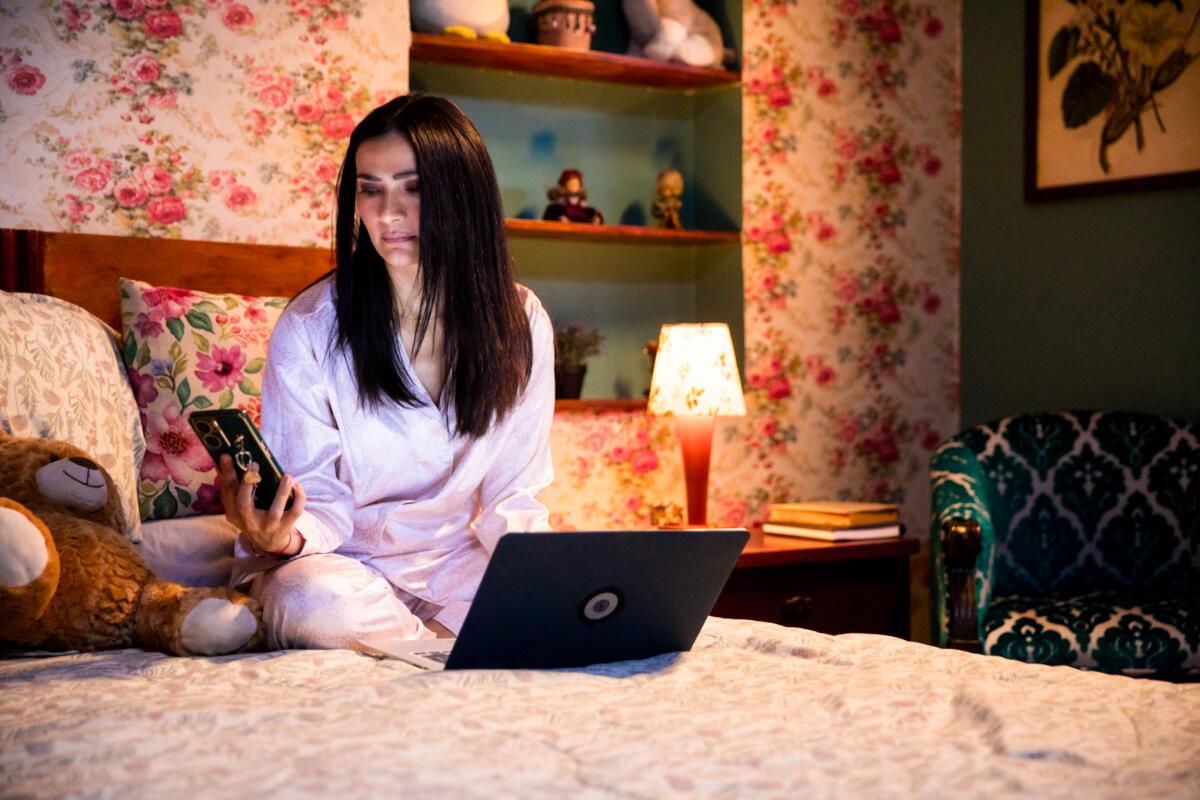
Ana María Orozco as Betty in a scene from “Betty the Ugly: The Story Continues.”
(Ana Maria Toro Chacon)
Thanks in large part to Orozco’s winning, nuanced performance, Betty was both cartoonish and realistic. She was equally at home in a slapstick comedy as she was in a romantic melodrama. But she was inimitably herself. She was smart, ambitious, driven, and for much of the series, unconcerned with how others viewed her. And she was neither a pitiful fool nor a mere laughingstock. She was the leading lady, after all. And it turned out that audiences were hungry for such a leading lady.
The series, which aired every night from Monday to Friday, was a hit in Colombia for the RCN network, which produced and broadcast it. If you grew up in Bogotá at that time, as I did, “Yo soy Betty, la fea” was a must-see. It was the epitome of casual television. At the height of its success, an episode could last up to 10 hours. They capture nearly 70% of the Colombian television audience (approximately 25 million viewers). RCN even broadcast episodes on the radio because many passengers returning home did not want to miss a second of the story. In 2000, Semana, The country's most prestigious magazine named Betty “Person of the Year.” The series and the actress swept all the awards for which they were nominated.
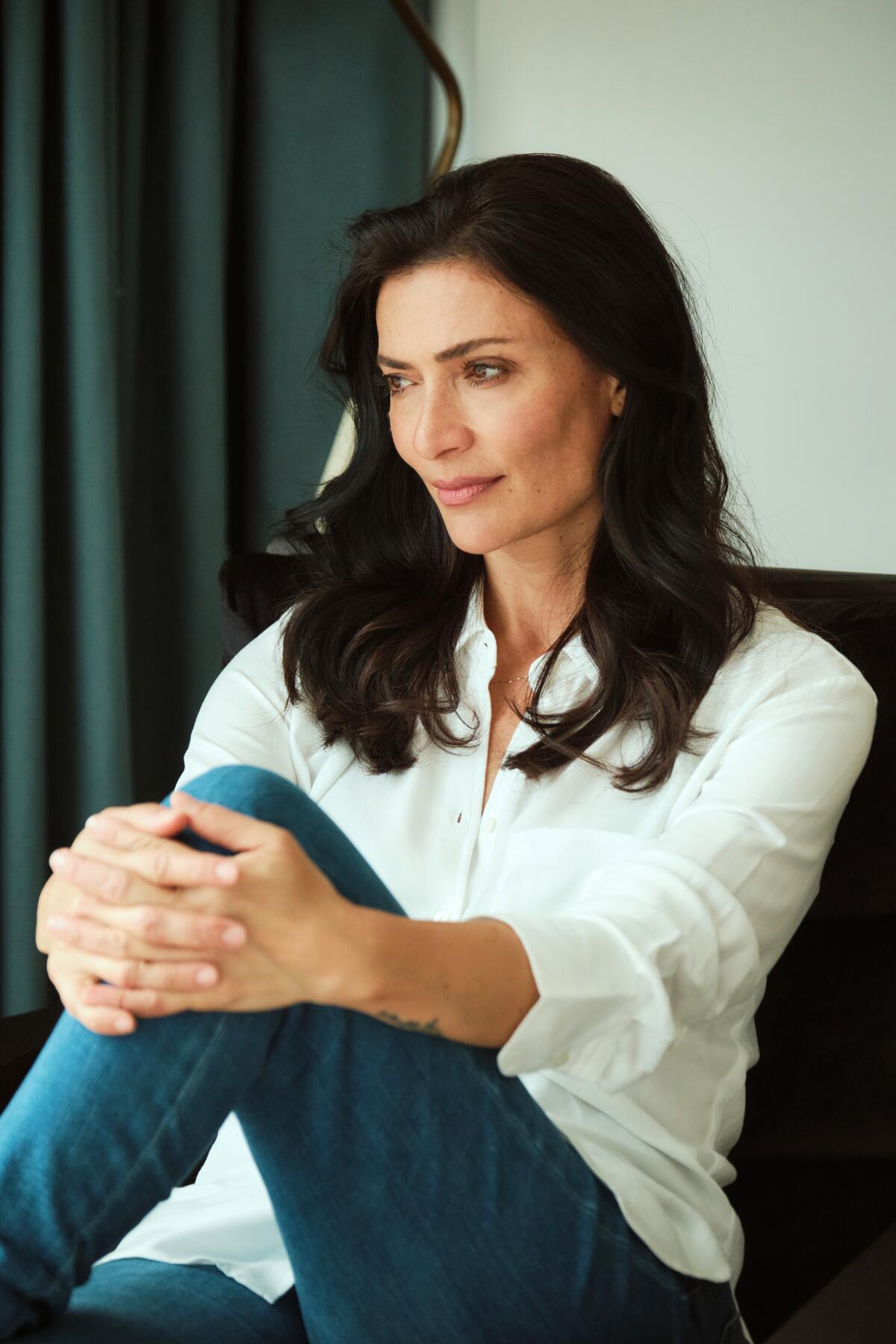
Ana María Orozco on the creator of “Yo Soy Betty, la Fea,” Fernando Gaitán: “There was a humanity in his characters that helped them feel universal.”
(Diego Armando Mendoza / For The Times)
Betty was a phenomenon in its home country. Before long, however, the soap opera was licensed to air worldwide and gained millions of fans with each new airing, and that has continued as the series has become available for streaming online. After ending its run in 2001, it also found new audiences through a spin-off, an animated series, more than 20 global remakes (including the ABC version, “Ugly Betty”) and a 2017 stage production starring the entire original cast.
For Orozco, who was 27 when the show ended after 335 episodes, the success was dizzying.
“When we finished filming, I felt a little exhausted,” she says. “I was also exhausted. We had been working 18 hours a day, six days a week for almost two years. And I was scared. What do I do with myself? Everyone wanted Betty, but I wanted more. I wanted an acting career. But that feeling eventually dissipated.”
Now, ahead of the premiere of “Ugly Betty: The Story Continues,” Orozco is comfortable with the idea of revisiting her most famous creation. And she’s given herself the license to embrace Betty’s iconic elements while giving them a modern twist. This is the Betty we all know and love, but Orozco is taking the character into a brave new world.
As fans of the original telenovela will notice, ads for the new series show Orozco sporting Betty’s signature red glasses and wavy bangs. Gone is the swan-like creature that ultimately seduced Armando with her flattened hair, rimless glasses, and pastel-colored ensembles. For Marta Betoldi, the writer who developed the series alongside Juan Carlos Pérez and César Betancur, this is the key to what makes revisiting Betty in 2024 so exciting.
“She’s not exactly the same Betty,” the Argentine writer tells The Times over Zoom in Spanish. “But she’s still herself. The same woman. But it’s been 20 years. She’s a mother now. She’s spent two decades with Armando, with that kind of man. She’s seen the #MeToo movement unfold and gone through that same kind of awakening that many of us went through that made us reevaluate our own intimacies and relationships. I thought Betty deserved that change.”
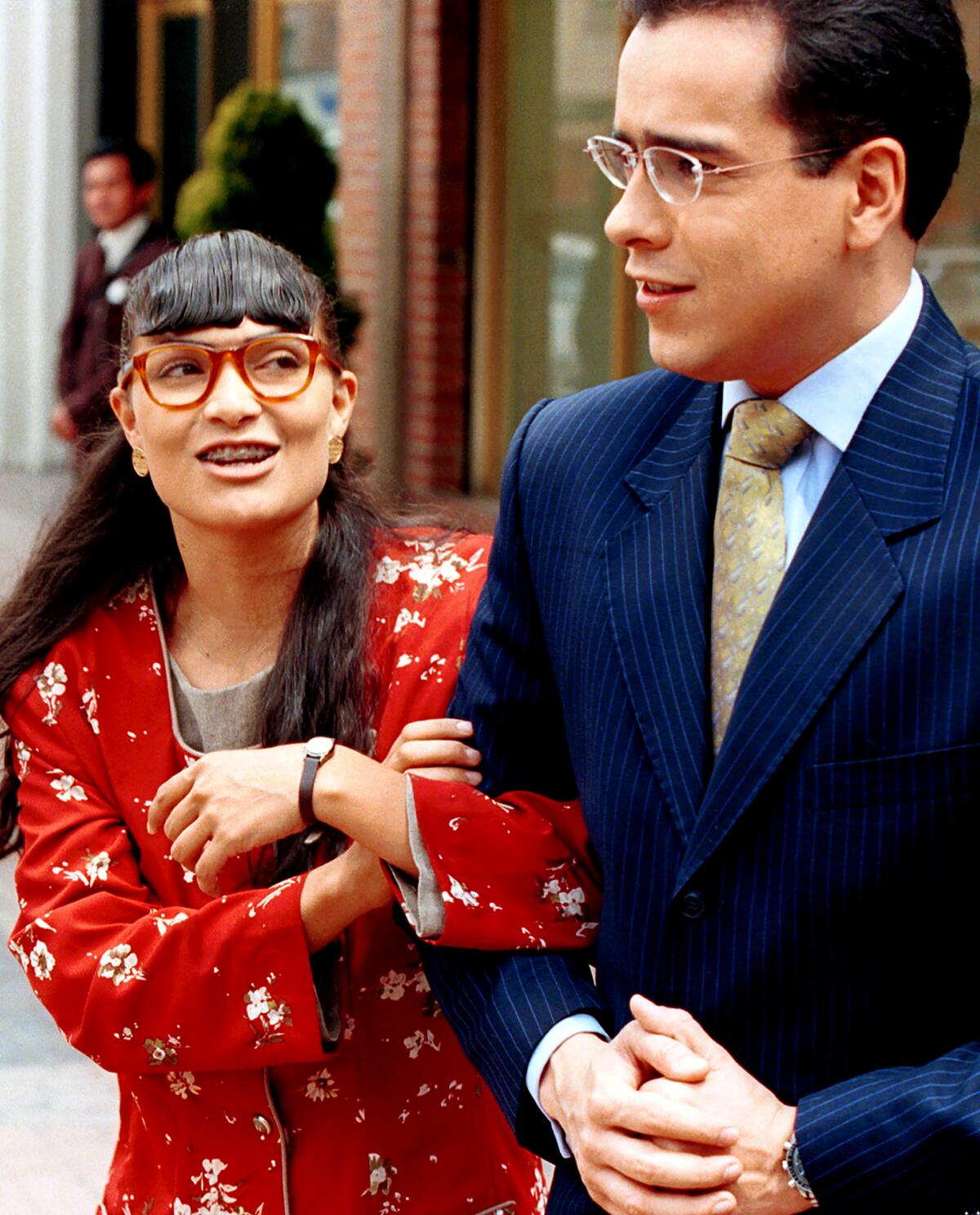
Ana María Orozco as Betty in the original Colombian telenovela “Yo Soy Betty, la Fea” with Jorge Enrique Abello, who plays Armando.
(Ricardo Mazalán / Associated Press)
For Betoldi and Orozco, this new series was a way to give Betty a chance to rediscover herself. The setting remains the same — it is, after all, still a workplace comedy at a fashion house. And most of the original cast is back, including Julián Arango, who reprises his role as Hugo, the strident, limp-wristed designer who still enjoys tormenting Betty, and Natalia Ramírez as Marcela, who was Armando’s fiancée and is now an enterprising, if downright conniving, shareholder at Ecomoda.
But Betty is adrift in this familiar world. When we meet her now, she is in the midst of a divorce from Armando and has given up running Ecomoda, which, as before, is in jeopardy. She finds it difficult to connect with her adult (and snobby) daughter. In essence, the happy ending that had characterized the finale in 2001 has been easily undone.
This ending is not intended as a way to erase what Gaitán, who died in 2019, had done, but as a way to live up to the spirit of what he had created.
“If Gaitán hadn’t written her with such elasticity, as such a three-dimensional character, we wouldn’t have been able to write her so easily in 2024,” says Betoldi. “In a way, she seems more adapted to this moment.”
“I find it quite interesting to see Betty again these days,” Orozco adds. “I mean, I’m older. Betty is older. And it was interesting to tell a story that felt contemporary. Not to do a remake. Or to go back to a vision of the past or just repeat what we had already done. For me that was key: to do something different without losing the essence of who Betty was.”
Orozco rose to the challenge, especially when it came time to update Betty’s look for 2024. In a key scene in the first episode of the new series, we get to see a collision of two Bettys. Standing in her old bedroom at her father’s house, Betty finds herself rereading old journal entries about her early days at Ecomoda. These are flashbacks straight out of the original telenovela, with Orozco’s youthful voice guiding us through the shift in aspect ratios that bridge the past and present. As she looks back, present-day Betty decides to do something radical. On a whim, she cuts her hair, puts back on her thick-framed glasses, and dusts off her old wardrobe.
“There is something symbolic about going back to that look,” Orozco adds. “It’s about getting to know yourself again.”
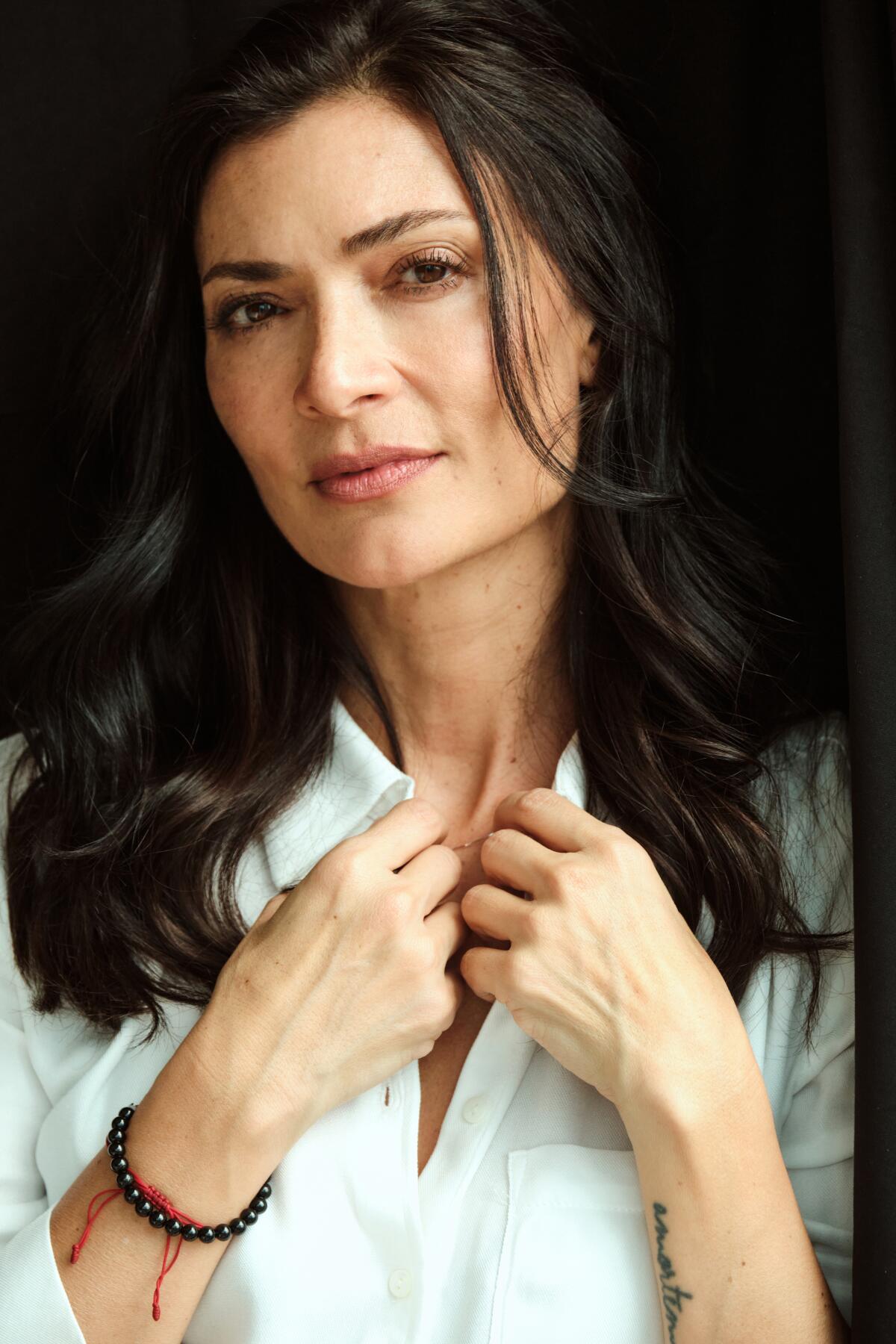
Ana María Orozco on playing Betty again: “I’m older. Betty is older. And it was interesting to tell a story that felt contemporary.”
(Diego Armando Mendoza / For The Times)
That may have been the easiest part of the project. The world has finally, perhaps, caught up with Betty and everything she stood for. Everything that made her “ugly” all those years ago — her outfits, her accessories, her natural hair — are things that are no longer looked down upon as much. Some are even appreciated. When Betty’s daughter, who is in her twenties and wants to be a modern designer, first sees Betty sporting the old look, she doesn’t call her mother ugly. Instead, she criticizes Betty for trying to pass herself off as a hipster.
The return of that iconic Betty is expected to be as emboldening for fans as it was for Orozco, who proves once again that she can unearth a soulful sensibility within a character that has long felt larger than life.
“I have never competed with Betty,” Orozco jokes. “Because she is so great and unique. She is so special and quite rare in an actor’s career, I know that. Today we are very good friends. She has been with me in many things. She has taught me a lot. And everything has been very beautiful.”
In Spanish, her phrase seems more appropriate. Orozco resorts to a phrase that is the opposite of how Betty is described, even in this new series. Everything has been “very nice,” she says. Nice. Pretty. Beautiful, even.

